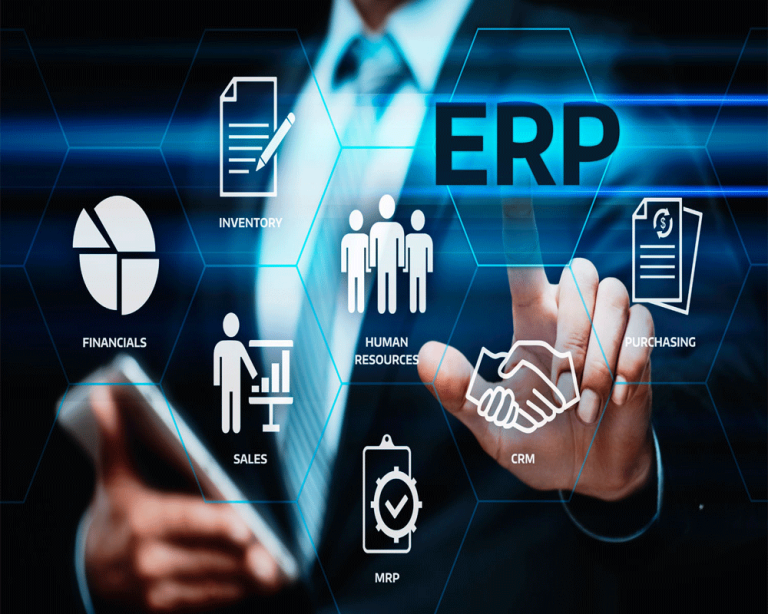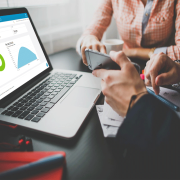Manufacturers have special needs when it comes to an ERP solution. We have a lot of experience talking through the selection process with manufacturing clients and thought we would share some of the most common questions we get, and our answers to them.
Here are our top manufacturing ERP frequently asked questions.

When is the right time to update our manufacturing ERP system?
Like any major decision, there isn’t a perfect time to do it. Key considerations for timing should be around the personnel you need to be involved and how much time they will have to devote to the project. The best ERP rollouts are those with a fully involved team.
How do we know how much ERP we need?
- There are no hard and fast rules for this, but your size and growth plans should dictate how much functionality you should invest in.
- There are some excellent checklists available that will help you plan your project, helping to right-size your system.
What does our team need to prepare for a manufacturing ERP project?
- This is a big question. The number one thing you need is a thorough understanding of your business processes and documentation of work flows and roles. If you aren’t clear how your business runs, how can your new solution optimize it?
- This is an area where we shine, helping customers get a handle on what their current state is, and what their desired state is, and how they can best get to the new system.

Will we get our historical data migrated over to the new system?
99% of solutions allow for easy transfer of master records and beginning balances. Outside of that, it gets a little murky, and often, expensive. There are a lot of factors that affect how your data can come over to the new system. The easiest, most cost-effective approach is to keep your history data for reference, and start new with balances.
- What is the best ERP software for our business?
There are a lot of great mid-market options out there, and frankly, most of them offer the same core functions. A few key considerations that we think are important to any growing firm are Built for Cloud, Total Cost of Ownership, Scalability, Mobility.
Also, key is the partner network that deploys, optimizes and supports the product.
Finally, the commitment that the software publisher has (R&D spend, support, partner requirements and badging, etc.)

What are the advantages of cloud-based manufacturing ERP?
Access anywhere, enable field workers, capture data when it is transacted, real-time information, accuracy of automation.
What is typically included in an ERP package and what is “extra”?
Most ERP solutions come in Editions or Packages that are built around industry needs. Implementation services will be included, and it covers detailed discovery, setup, configuration, bringing in master records and beginning balances, training, testing, and go-live support.
Extras are requests that fall outside the scope of your original engagement. Usually these are modifications or customizations, integrations to other tools, and any special requests that come up as the project gets towards the finish line.
To avoid unplanned extras, take your time and be thorough during the discovery phase of your project. Ask for input from all teams that will use the system. Dream big in terms of how the new system will function, and then scale it up or down based on your budget.
How long does it take to deploy a new ERP system?
It depends. I know that isn’t a satisfying answer, but it really does. We’ve had deployments that take less than 4 months and others that take 9+ months. It varies based on the complexity of your business and your team.
Delays often revolve around the capacity for you and your team to assist with gathering data, providing feedback, testing the solution. You have a business to run while all of this is going on, and it can be challenging to carve out time for these tasks.
As you plan your implementation with your partner, make sure you allocate blocks of time each week for the critical team members to focus on their contributions to the project. It will help you stay on track and on time.

Who on my team should be involved in evaluating a solution?
We strongly recommend you include all department leaders that will utilize the system. It may seem cumbersome but including them provides valuable insight into their wish list of functionalities, makes them feel valued, gains buy-in, and greatly improves the success rate of the project.
At a minimum, you should have a Senior Management Executive to serve as the project owner/sponsor, also a Project Manager, and Subject Matter Experts from each function. Also, it is wise to include a person responsible for Change Management in your ERP project team. Additionally, make sure the department leaders have a wider understanding of the entire business, not just their own departments.
How easy it is to integrate our other systems with an ERP solution?
This is another “it depends” answer. The key variables here will be:
- What is the data in your other systems written in?
- Do you have easy access to getting the data out of the other system?
- Do you own the data or does someone else?
- How clean is the data? Is there someone on your team that can work with the data to get it in acceptable shape for import/integration?
- How often does this data need to be refreshed?
How often do I need to upgrade my ERP package? What will that cost?
For most manufacturers, the upgrade cycle is roughly every 2 years. This cadence allows you to get all the benefits of being on the most current version, take advantage of new features, and stay competitive. As far as cost, with a modern solution like Acumatica, your upgrades are pushed out electronically, taking the worry out of the process.
How do we measure the ROI of implementing ERP software?
There’s a great Forrester whitepaper that explains the Total Economic Impact of an ERP project. Here are some highlights:
- Increased gross margin, yielding gains of $1.3m.
- Reallocated 50% of IT time, saving $614.3k.
- Increased sales volume by 15%, yielding $471k.
- Avoided legacy licensing costs of $464k.
- Enhanced efficiency by 45%, resulting in $309k in labor cost savings.
- Payback time: 16 months.
We hope these were helpful, and are here to discuss your specific needs. Call us at 440-498-9920.
Recommended reading:
10 Questions to Ask When Evaluating an ERP Solution




